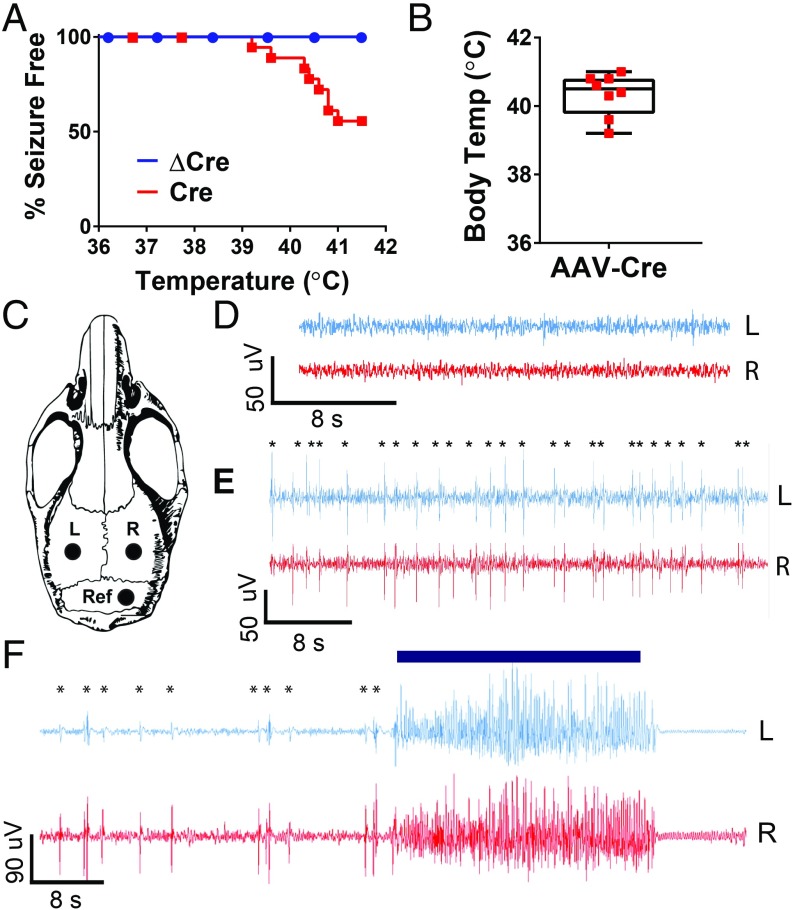Fig. 3.
Reduction of hippocampal NaV1.1 is sufficient to induce thermally evoked seizures. Scn1a floxed mice were injected at P21 with AAV-ΔCre or AAV-Cre virus. Mice were either allowed to age to P42 and then thermally induced to test for thermally evoked seizures, or were implanted at P35 with EEG electrodes and then electrographically recorded during thermal induction 1 wk later at P42. (A) Percent of AAV-Cre and AAV-ΔCre mice remaining seizure-free after thermal induction. (AAV-ΔCre: 100%; AAV-Cre: 66%). (B) Core body temperature at which AAV-Cre–injected mice had seizures (AAV-Cre: 40.3 ± 0.2 °C). (C) Schematic of placement of left cortical electrode (L), right cortical electrode (R), and reference electrode (Ref) during EEG implantation surgery. (D) Representative cortical EEG trace of an AAV-Cre–injected mouse during the habituation period before the thermal induction protocol. (E) AAV-Cre–injected mouse experiencing interictal events during thermal induction protocol; asterisks denote myoclonic events. (F) Myoclonic events leading up to a behavioral seizure in an AAV-Cre–injected mouse; asterisks represent myoclonus, blue bar indicates observed behavioral Racine-5 seizure.

